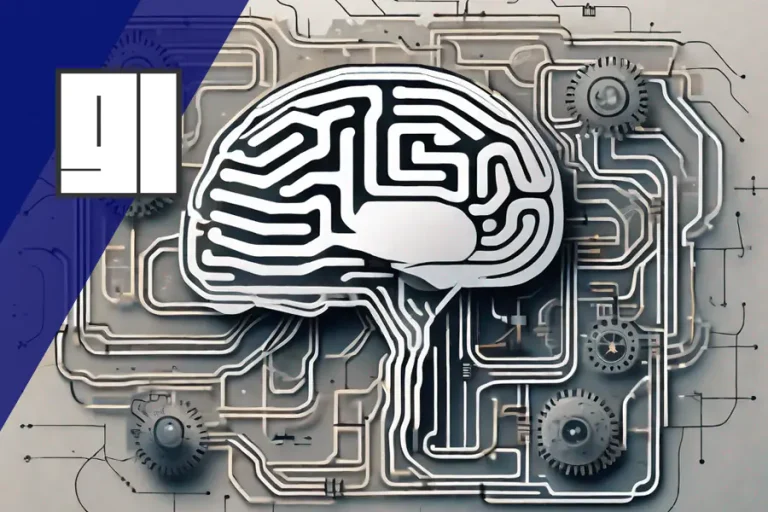How to Train a Chatbot: What To Know First
How to train a chatbot, an integral part of the AI revolution, is no small feat. It requires careful planning and strategic implementation to ensure your bot not only understands user intent but also responds in a way that feels natural and engaging.
What’s In It For You?
- Fundamentals: Learn the basics of bot training.
- Tools: Discover tools and libraries to train a bot.
- Opportunities: What to do if you are not a coder.
- Risks: Discover the pitfalls and things to avoid while training your bot.

In this post, we’ll delve into the complexities of training a chatbot to effectively interpret user intent. We will explore how defining clear user intents can make or break your AI chatbot’s performance. You’ll learn about potential consequences if you fail to adequately train your bots.
We’ll walk through how Python libraries can be leveraged for creating custom AI chats and why it’s advantageous over pre-built solutions. The importance of diverse learning material and well-defined topics for effective conversational AIs will also be discussed.
You’ll discover the impact well-trained conversational AIs have on business success, along with insights into using no-code builders like Botsonic effectively while avoiding bias during machine learning processes. Lastly, we’ll touch upon enhancing engagement levels through interactive components in your chatbots.
Fundamentals of Chatbot Training with Artificial Intelligence
Mastering the art of effective chatbot training, a fundamental element of artificial intelligence, is as crucial as understanding the basics. Kick-start your journey by deciphering user intent and creating individual bots for each specified intent. Incorporate a multitude of expressions to capture every possible user intention. A bot that hasn’t been trained properly is akin to a catastrophic hair day, a ticking time bomb just waiting to explode.
Deciphering User Intent: The Core of a Trained AI Chatbot
User intent acts as a compass for your bot, guiding it to understand what customers are seeking when they engage with your live chat. This could range from acquiring information or making a purchase, to requiring support. By effectively pinpointing these intents, you can provide enhanced responses, thereby leaving your customers as gleeful as a youngster in a candy shop.
Comprehending user intent in the realm of chatbot training through natural language processing techniques is no joke – it’s the secret sauce for killer communication.
The Consequences of Poorly Trained Chatbots
Badly trained chatbots can wreck your rep and your profits. They might spew out wrong info, take forever to solve problems, or even offend users with their cluelessness. It’s like having a parrot that only speaks gibberish – nobody wants that.
A study by the Forbes Tech Council found that 73% of consumers won’t come back after a bad bot experience. Ensure that your bots are of the highest quality to ensure customers remain loyal.
Mastering chatbot training is key to customer satisfaction. Nail down user intent, avoid disasters, and keep customers coming back for more. #ChatbotTraining #CustomerSatisfaction
Utilizing Python Libraries for AI Chatbot Training
Python libraries, such as the OpenAI library are your secret weapon if you’re aiming to create a custom AI chatbot. Tools like ChatGPT API, Gradio, and PyPDF2 will make your bot smarter than a talking parrot.
Essential Python Libraries for Building Custom AI Chats
- ChatGPT API: Train your bot with OpenAI’s GPT-4 model, the large language model that puts Shakespeare to shame.
- Gradio: Create interactive UIs for your machine learning models. It’s like giving your bot a fancy tuxedo.
- PyPDF2: Extract text from PDF files, so your bot can read more than just memes.
These tools are flexible enough for entrepreneurs and tech pros alike. allowing everyone to build intelligent chatbots without needing to add Python wizardry to their skillset.
Advantages of Using Customized AI Chats
A customized chatbot is like having a personal assistant with your brand’s personality. It connects with customers on a deeper level than a generic bot. Plus, it gives accurate responses because it’s trained on specific business topics. And the best part? You have full control over its features and capabilities. It’s like having a bot that can do magic tricks.
However remember, proper training is key. Don’t rush the process. Take your time to understand each tool’s functionality before diving into development work. You don’t want your bot to turn into a chatty parrot with no sense.
Master the art of building custom AI chatbots with Python libraries like OpenAI API, Gradio, and PyPDF2. No tech wizardry required. #AIchatbot #Python
Data Collection and Topic Definition For Conversational AIs
When it comes to training a conversational AI, data collection is key. You need a diverse range of learning material for your bot, including the top 100 specific business topics and small talk. This ensures your chatbot can handle all kinds of user queries like a pro.
Importance Of Diverse Learning Material In Bot Training
A diverse collection of learning materials acts as a knowledge base for our bot, it is like feeding a child from multiple food groups – it makes them grow up healthier and stronger. Similarly, feeding your chatbot diverse data helps it become an intelligent entity that can handle complex conversations with ease.
You can find useful resources online, like Kaggle datasets, where you’ll get access to a treasure trove of information on various topics that can supercharge your bot training sessions.
Role Of Clear Topic Definitions In Effective Learning
Defining topics clearly before training is as important as giving clear instructions to students before an exam. Clear definitions help bots understand what they’re being trained on, reducing confusion and boosting learning efficiency.
To make topic definition crystal clear, tools like the Google Cloud Natural Language API come to the rescue. With powerful pre-trained models, this tool analyzes text semantics and takes topic clarity to a whole new level.
Want to have intelligent conversations with a chat bot?Train it with a diverse knowledge base and clear topic definitions. #ChatbotTraining #AI
Impact of Well-Trained Conversational AIs on Business Success
The proliferation of conversational AI has revolutionized businesses around the globe. These digital assistants, when well-trained, can scale support operations and boost customer satisfaction. They provide personalized products or services, reducing churn rates.
Benefits of Well-Trained Conversational AIs for Businesses
- Better Customer Experience: Instant recognition and answers enhance the overall customer experience.
- Scaled Support Operations: 24/7 availability ensures no query goes unanswered – regardless of time zones or holidays.
- Informed Decision Making: Data collected by these bots can be analyzed to understand consumer behavior and make informed business decisions.
A great example is Umni’s pretrained modules. They offer immediate recognition and responses, making implementation easier than ever before.
The Revolutionary Impact of Pretrained Modules Like Umni
The introduction of pretrained modules like those from Umni has revolutionized chatbot training. Instead of starting from scratch, you now have access to existing models that understand certain aspects of human language – saving time and resources.
This technology simplifies chatbot development and ensures quality interactions with users right off the bat. However, continuous learning based on real-time interactions is key for maintaining relevance and accuracy over time.
No-code Builders: Making Software Leverage a Piece of Cake
The advancing digital environment necessitates the utilization of effective software tools. Enter no-code builders like Botsonic – the superheroes of customization. With these platforms, you can create personalized chatbots without any coding knowledge. Talk about power in simplicity.
The Good, the Bad, and the Botsonic
No-code builders are a game-changer. They empower even the least tech-savvy to design powerful chatbots tailored to their business needs. But beware. Poorly trained bots can offend users and damage your brand reputation. So, tread carefully.
- Benefits: No code, no problem. These builders democratize technology, allowing anyone to build AI-driven solutions quickly and efficiently.
- Risks: Handle with care. Mismanaged tools can result in subpar user experiences, tarnishing your brand’s reputation.
Entrepreneurs: Unleash the Power of Software Tools
No code, no hassle. These platforms simplify complex processes, freeing businesses to focus on strategy execution instead of getting tangled in coding tasks. Boost productivity, increase ROI, and embark on the path to success. Just remember, proper training and management are key to optimal performance from these virtual assistants.
To get the most out of your bot, feed it reliable information and monitor its interactions. Maintain quality standards throughout. Consider integrating interactive components like videos, product suggestions, and calls-to-action to enhance engagement and create a more human-like experience. But don’t go overboard with slang – keep it classy.
No-code builders, like Botsonic, are democratizing technology by allowing anyone to create personalized chatbots, drastically simplifying complex processes. However, these tools must be used wisely, as poorly managed chatbots can damage brand reputation.
Proper training and adding interactive elements can enhance user engagement and offer a human-like experience. While casual conversation can increase approachability, maintaining professionalism is crucial to prevent overuse of slang.
Avoiding Bias During The Machine Learning Process
Training chatbots without bias is like trying to juggle flaming swords – it’s risky business. To ensure diversity, involve members from different departments when defining your target customers. This way, you can create buyer personas based on real conversations and relevant data.
The Need To Avoid Bias During Machine Learning Processes
Bias in machine learning algorithms can lead to wonky results that don’t reflect your actual customer base. Imagine training a bot for customer service using only tech-savvy folks – it would leave the less tech-oriented users hanging. Not cool.
To dodge this bullet, bring in team members from sales, marketing, and product development during the bot-training process. Their diverse perspectives will help you create buyer personas that cover all potential user categories.
Creating Buyer Personas Based on Conversation Histories and Other Relevant Data
Want to build buyer personas that hit the bullseye? Start by gathering FAQs and analyzing conversation histories. These nuggets of wisdom will give you insights into common customer issues.
- Data Collection: Grab those frequently asked questions (FAQs) and dive into past conversations between customers and support teams.
- Analyzing Data: Look for patterns in the data – what problems keep popping up? What kind of language do customers use?
- Categorizing Information: Use this goldmine of information to categorize your buyers into distinct groups or ‘personas’.
This deep understanding will help you tailor responses to each persona’s needs, so your answers are as crisp as a freshly baked croissant. And the best part? Your customers won’t have to exert much effort in order to receive the aid they require.
How to train chatbots without bias? Involve diverse team members to create buyer personas based on real conversations and data. #MachineLearning #ChatbotTraining
Enhancing Engagement Levels Through Interactive Components
Interactive components are the superheroes of engagement levels in the digital world. They’re like videos, product suggestions, and calls-to-action, swooping in to save the day and make interactions more human-like. Check out videos for some serious engagement power.
Increasing Engagement Levels With Videos, Product Suggestions, and Calls-To-Action
Videos are the cool kids of user interaction. They keep visitors on your site longer, increasing the chances of them becoming customers. And personalized product suggestions? They’re like a matchmaker, sparking interest and encouraging exploration. Don’t forget the power of calls-to-action – they’re like a virtual cheerleader, urging users to take action and boosting conversion rates.
Maintaining Quality Standards By Monitoring Interactions Consistently
Adding interactive components is great, but don’t forget to keep an eye on things. Consistent monitoring ensures top-notch user experience and helps fix any glitches before they become a buzzkill. And hey, give your chatbot a fun name, but keep its language professional. You want it to be approachable, not alienating.
Remember, engaging chatbot conversations are awesome, but poorly trained bots can leave a bad taste. So, keep an eye on them and provide top-notch customer service through AI-powered bots.
Interactive elements boost user engagement and conversions, but require consistent monitoring to ensure quality user experience.
Approachable, yet professional chatbots can enhance engagement, but must be well-trained to avoid impacting customer service negatively.
FAQs in Relation to How to Train a Chatbot

Conclusion
This blog post has spilled the beans on training chatbots and using software as a secret weapon for success.
We’ve also dived into the importance of data collection, defining topics, and avoiding bias in machine learning.
Plus, we’ve shed light on how well-trained chatbots can boost customer engagement and create personalized experiences.
And let’s not forget the role of no-code builders like Botsonic in making software magic happen.
By following these guidelines and keeping an eye on quality, you’ll be able to train chatbots that deliver top-notch user experiences.
If you need help getting started with your chatbot, work with graz to get your AI journey started.

Graz is a tech enthusiast with over 15 years of experience in the software industry, specializing in AI and software. With roles ranging from Coder to Product Manager, Graz has honed his skills in making complex concepts easy to understand. Graz shares his insights on AI trends and software reviews through his blog and social media.







